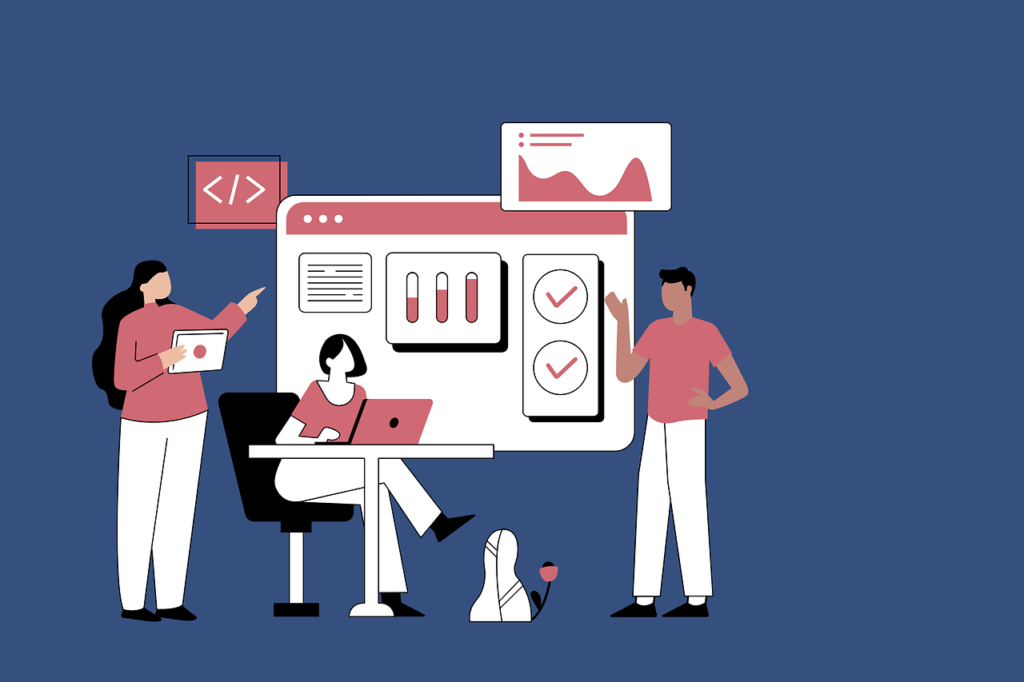Discovery Phase: How We Shape Market-Ready Products

Skipping the Discovery Phase spells disaster for startups. As our Product Managers at WiserBrand often say, in the rush to market, the discovery phase is frequently the first casualty. Indeed, this overlooked stage is where the battle for market relevance is won or lost. Before diving headfirst into development, it's essential to pause and reflect: does your idea truly resonate with actual market needs and user desires?
Consider the case of Dinnr, a startup with a catchy concept of delivering recipe ingredients directly to your door. Despite its appeal, Dinnr collapsed because it didn't align with enough customers' needs. Missing out on a vital step – confirming a substantial market for their service – was their downfall. EventVue, aiming to revolutionize networking at conferences, suffered a similar fate, failing to secure a product-market fit and neglecting early concept validation. Even Sip, a venture by ProductHunt offering bite-sized tech news, found itself shuttered, a victim of market indifference and a lack of focus.
These examples highlight a critical principle we uphold at WiserBrand: understanding your market is paramount. In this article, we'll explore the pivotal role of the discovery phase, leveraging our expertise and experiences to illuminate its vital importance in aligning products with market demands and user expectations.
Contents:
- What is a Discovery Phase?
- Key objectives and benefits
- Team composition and roles
- Discovery phase process
- Tools and techniques used
- Best practices
- Conclusion
What is a Discovery Phase?
The Discovery Phase is more than a mere step in project management – it's the foundation upon which successful products are built. This phase is a strategic deep-dive into the project's heart and soul, ensuring every aspect is in harmony with business goals and user needs. It's where our teams engage in meticulous market research, stakeholder analysis, user persona development, and the identification of technical and functional requirements. It’s where ideas are tested, assumptions are challenged, and strategies are formed, all to ensure that your project isn't just a fleeting thought but a viable market contender.
Key Objectives and Benefits
Validating Product-Market Fit
The Discovery Phase is our reality check. Here ideas meet the harsh light of day, interacting with real users instead of floating in a vacuum of assumptions. This stage is critical for shaping the target audience, tuning our clients' project vision with business aspirations, and gauging market viability.
Enhancing User Experience
At its core, the Discovery Phase revolves around the user – their challenges, their needs, their expectations. Engaging directly with the target audience, we turn their feedback into features that not only meet but potentially exceed their expectations.
Facilitating Prototype Development
In the world of startups, a prototype is worth a thousand meetings. The Discovery Phase is where these early models are conceived and refined, transformed from vague concepts into tangible representations. This isn't just about aesthetics; it's about functionality, usability, and resonance. The insights we gather in this phase are the raw materials from which we sculpt prototypes that truly reflect user needs and project objectives. Skipping this step is akin to navigating a labyrinth blindfolded – you might find your way, but the odds aren't in your favor.
Cost Management & Efficiency
Here's a hard truth: every dollar counts in the startup realm. The Discovery Phase is your financial compass, guiding you through the treacherous waters of budgeting and resource allocation. By understanding the project's requirements and potential pitfalls upfront, we can steer clear of unnecessary expenditures. This isn't just cost-saving; it's cost-optimizing, ensuring every penny contributes to meaningful progress.
Risk Mitigation
The path of project development is fraught with risks and uncertainties, but the Discovery Phase acts as a lighthouse, illuminating potential hazards before they become shipwrecking problems. Identifying risks early allows us to chart a course around them, ensuring smoother project progress and minimizing the likelihood of costly detours or delays.
Team Composition and Roles

When it comes to shaping the success of the product, we act like a well-oiled machine, where every component is essential:
- Project Manager: The strategist and guide, the Project Manager ensures that all aspects of the discovery process are running smoothly and efficiently. They are responsible for maintaining clear communication, setting milestones, and keeping the team aligned with the project's goals.
- Business Analyst: The Business Analyst acts as the interpreter of market and user data. They delve into research, extracting valuable insights and translating them into actionable strategies. Their role is to ensure that the product is not only viable in the market but also meets the users' needs effectively.
- Software Architect: The Software Architect lays down the technical blueprint of the project. They are tasked with designing a robust and scalable architecture, selecting the right technology stack, and ensuring that the technical aspects of the project align with the overall vision and user requirements.
- UX/UI Designer: The UX/UI Designer focuses on the user interface and experience. Their role is to craft a design that is not only visually appealing but also intuitive and user-friendly. They bridge the gap between the technical functionality of the product and the end-user's interaction with it, ensuring a seamless and engaging experience.
Discovery Phase Process
It has five crucial milestones. Each step in this journey is designed to build upon the last, ensuring a comprehensive and strategic approach to project development:
Gathering Information About the Product
We start by collecting every clue about the project and dive deep into the business model, roadmap, and existing research. This is about understanding the why behind the what – the driving force behind the product idea.
Empathizing with the User
We paint a detailed portrait of our target user, not just their demographics but their dreams, their daily challenges, and their digital habits. This isn't just about creating a product; it's about creating a solution for real people.
Conducting User Interviews
Armed with our proto-personas, we engage in real conversations with real users. These interviews are our litmus test, validating or challenging our hypotheses, and refining our understanding of what the user truly needs.
Brainstorming Solutions
This is where creativity meets strategy. Our team collaborates in a storm of ideas, each one examined, critiqued, and either polished to shine or set aside. It's a quest for the most promising solutions, those that will form the bedrock of our prototype.
Iterating Prototype with User Interviews
The cycle of feedback continues as we bring our prototype back to the users. This is where theory meets practice, where we see if our solutions truly resonate with the user's reality.
Tools and Techniques Used
Our arsenal in the Discovery Phase is diverse, each tool and technique a specialized weapon against uncertainty and assumption:
- Mind Maps to chart the project's terrain.
- User Stories to narrate the user's journey.
- BPMN Charts to blueprint the project's processes.
- Request-Response Models to outline system interactions.
- Diagrams of Non-Functional Requirements to frame the project's backbone.
- Design Concepts to sketch the product's first impressions.
- SWOT Analysis to strategize against the competitive landscape.
Venturing into development without the Discovery Phase is a gamble with high stakes. Without this phase, deadlines become mirages, constantly out of reach, and costs spiral like a runaway train. The Discovery Phase is not just a step; it's a safeguard against these pitfalls.
Best Practices for an Effective Discovery Phase

As you can see, mastering the Discovery Phase is key. Here are strategies we use to ensure your venture not only survives but thrives:
Conduct Thorough Competitors Research
Knowledge is power in the business battlefield. We dive deep into competitor analysis to uncover gaps in the market and opportunities for differentiation. Understanding what's already out there helps you carve out a unique niche for your product.
Incorporate Diverse Expertise into Your Team
Diversity breeds innovation. Our teams have varied skills and perspectives. This mix of talents brings a rich tapestry of ideas and solutions, essential for navigating the complexities of the Discovery Phase with agility and creativity.
Foster Open Communication Among Team Members
Transparent and open communication is the glue that holds our projects together. It ensures that every team member is on the same page, contributing their best, and staying aligned with the project's goals. We cultivate an environment where ideas flow freely, and feedback is welcomed.
Optimize Data Collection with Appropriate Tools
The team should always have the right tools to gather and analyze data. From user surveys to market analysis tools, the right technology can streamline your data collection process, providing insights that are both accurate and actionable.
Conclusion
Throughout this article, we have seen how the Discovery Phase acts as a compass, guiding projects from mere concepts to market-ready products. It is where product-market fit is validated, user experiences are enhanced, costs are managed efficiently, and potential risks are mitigated.
For startups and established businesses alike, embracing the Discovery Phase is not just a step in project management—it's a strategic investment in the product's future and a commitment to its success.
